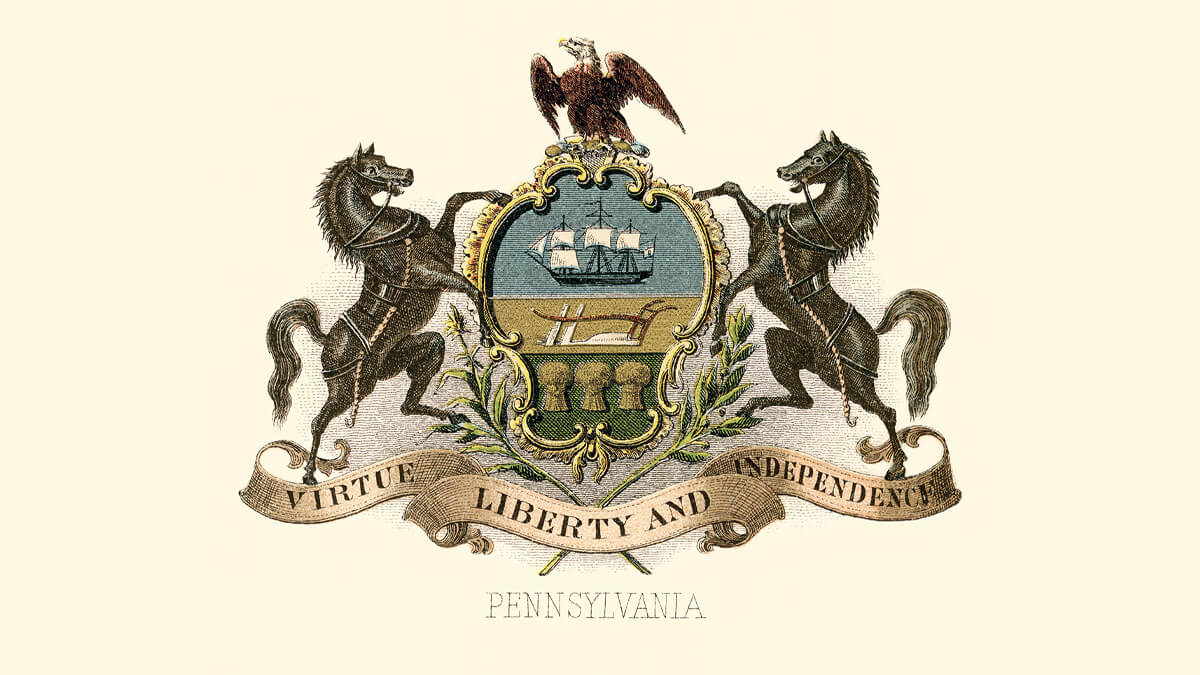Composition
The Pennsylvania flag features a field of blue charged with the commonwealth coat of arms, centered.

Pennsylvania was the second state (commonwealth) to ratify the U.S. Constitution (just days after Delaware).
The General Assembly approved a first official flag in 1799, prominently featuring the Pennsylvania coat of arms. However, inconsistencies abounded so a few years later the flag was standardized to the version known today.
The flag was officially adopted June 13, 1907.
The Pennsylvania flag features a field of blue charged with the commonwealth coat of arms, centered.

transportation, agriculture
Native peoples, history
peace, a hopeful future.
strength in sovereignty
coastal commerce, the port of Philadelphia
rich agricultural tradition
rich natural resources
virtue, liberty, independence
Somewhat like the original flag, there were many inconsistent versions of the coat of arms between 1778 and 1875. The official coat of arms was adopted in 1874, designed almost 100 years earlier by Caleb Lownes, a Philadelphia Quaker.

The flag must use the same blue as the U.S. national flag, required since the standardization in 1907.
Pennsylvania statute specifies the dimensions of the flag in feet and inches. It should have a hoist of 4 feet, 6 inches and a fly of 6 feet, 2 inches.
This is an unusual 27:37 proportion, so the flag is usually produced with a proportion of 2:3.
It does not specify dimensions for the coat of arms beyond “proportionate size.”
The flag can also have knotted fringe of yellow silk, measuring 2 and 1/2 inches wide and a cord of white and blue silk, measuring 8 feet, 6 inches.
